|
Books Should Be Free Loyal Books Free Public Domain Audiobooks & eBook Downloads |
|
|
Books Should Be Free Loyal Books Free Public Domain Audiobooks & eBook Downloads |
|
Religion |
|---|
|
Book type:
Sort by:
View by:
|
By: Saint Alphonsus Liguori (1696-1787) | |
|---|---|
 Glories of Mary
Glories of Mary
The Glories of Mary is a classic book in the field of Roman Catholic Mariology, written during the 18th century by Saint Alphonsus Liguori, a Doctor of the Church. The book was written at a time when some Jansenists (which were declared heretical by the Pope) were criticizing Marian devotions, and was written in part as a defense of Marian devotion. The book combines numerous citations in favor of devotion to the Blessed Virgin Mary from the Church Fathers and the Doctors of the Church with Saint Alphonsus' own personal views on Marian veneration and includes a number of Marian prayers and practices. | |
By: Saint Ambrose (337/340-397) | |
|---|---|
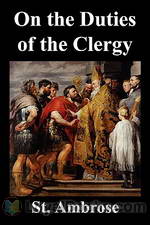 On the Duties of the Clergy
On the Duties of the Clergy
Aurelius Ambrosius was a fourth century cleric who rose to become the Archbishop of Milan in 374 AD. His father was a powerful Roman general and the prefect of Gaul. His brother and sister were also consecrated as saints by the Catholic Church. As an infant, a swarm of bees settled over his face and flew away without harming the baby, but left behind a drop of honey and this was seen as a sign of his future eloquence and bees are often painted in his portraits as his symbols. Ambrosius (or Ambrose as he is referred to in English) was a highly learned man, well versed in Latin and Greek, theology and many other subjects... | |
 Concerning Virgins
Concerning Virgins
Concerning Virgins (De Virginibus) is a series of letters, compiled into three “books,” St. Ambrose wrote to his sister, Manellia, These, perhaps Ambrose’s earliest writings, were written in 377 CE. Written in a rather light-handed non-technical style they appear as ethical guides to women who are contemplating entering nunneries. More importantly, they set the tone for Ambrose’s later writing on ethics. Concerning Virgins was referred to by other patristic writers including St. Jerome, St Augustine and Cassian, and are now included in the extra-biblical cannon of the early church fathers. | |
By: Saint Augustine (354-430) | |
|---|---|
 The Confessions of St. Augustine
The Confessions of St. Augustine
| |
By: Saint Augustine of Hippo (354-420) | |
|---|---|
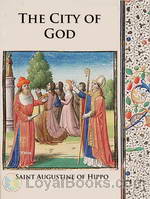 The City of God
The City of God
Rome having been stormed and sacked by the Goths under Alaric their king, the worshipers of false gods, or pagans, as we commonly call them, made an attempt to attribute this calamity to the Christian religion, and began to blaspheme the true God with even more than their wonted bitterness and acerbity. It was this which kindled my zeal for the house of God, and prompted me to undertake the defense of the city of God against the charges and misrepresentations of its assailants. This work was in my hands for several years, owing to the interruptions occasioned by many other affairs which had a prior claim on my attention, and which I could not defer... | |
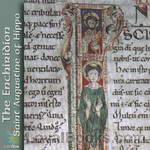 The Enchiridion
The Enchiridion
The Enchiridion, Manual, or Handbook of Augustine of Hippo is alternatively titled, “Faith, Hope, and Love”. The Enchiridion is a compact treatise on Christian piety, written in response to a request by an otherwise unknown person, named Laurentis, shortly after the death of Saint Jerome in 420. It is intended as a model for Christian instruction or catechesis. – As the title indicates, the work is organized according to the three graces necessary for the Christian worship of God: Faith, Hope and Love... | |
 Of Holy Virginity
Of Holy Virginity
St. Augustine wrote in his Retractions 2:23: "After I had written 'on the Good of Marriage,' it was expected that I should write on Holy Virginity; and I did not delay to do so: and that it is God's gift, and how great a gift, and with what humility to be guarded, so far as I was able I set forth in one volume. This book begins," etc. - Summary by St. Augustine | |
 On Christian Doctrine
On Christian Doctrine
De doctrina Christiana, On Christian Doctrine, is a famous treatise by Augustine of Hippo, consisting of four books that describe how to interpret and teach the Scriptures. The first three books, published in 397, set three tasks for Christian teachers and preachers: to discover the truth in the contents of the Scriptures, to teach the truth from the Scriptures, and to defend scriptural truth when it was attacked. It is believed that the last part of book three and the totality of book four were added much later, in 426. The fourth book is especially quoted for being the first treatment of the relation between Christianity and Ancient Rhetoric. Summary by Leni. | |
 Ten Homilies on the First Epistle of John
Ten Homilies on the First Epistle of John
As regards the plan of the Epistle, it has been often asserted till lately that it was supposed to be but fragmentary, a series of aphorisms. Augustine, however, without formally announcing a plan as discovered by him in the Epistle, not only frequently affirms in his exposition that charity or love is the Apostle’s main theme, but so conducts the discussion, gathering his arguments and illustrations around this central thought, as to render it evident that in his view the purpose and plan of the Apostle is to set forth love in its essence and its scope, and that he intends to make this thought dominant in every part. - Summary by Philip Schaff | |
 Expositions on the Book of Psalms Vol. 1
Expositions on the Book of Psalms Vol. 1
The Book of Psalms is commonly known as the Psalms or the Psalter, and is divided into five sections, each closing with a doxology. The title is derived from the Greek translation, ψαλμοί meaning "instrumental music" and, by extension, "the words accompanying the music". Most if not all are thought be composed by King David. The Psalms have always been an integral part of the prayers of the Christian church and especially among monks, who would generally chant all psalms in a week-long cycle... | |
 Expositions on the Book of Psalms Vol. 2 - Psalms 37-52
Expositions on the Book of Psalms Vol. 2 - Psalms 37-52
These sermons on the Psalms of the Holy Prophet and King David are as poetic as the Psalms themselves. They are well-suited for inspirational and devotional listening. - Summary by The Reader | |
 Expositions on the Book of Psalms Vol. 3 - Psalms 53-75
Expositions on the Book of Psalms Vol. 3 - Psalms 53-75
These sermons on the Psalms of the Holy Prophet and King David are as poetic as the Psalms themselves. They are well-suited for inspirational and devotional listening. - Summary by The Reader | |
 On Lying
On Lying
I have also written a Book on Lying, which though it takes some pains to understand, contains much that is useful for the exercise of the mind, and more that is profitable to morals, in inculcating the love of speaking the truth. This also I was minded to remove from my works, because it seemed to me obscure, and intricate, and altogether troublesome, for which reason I had not sent it abroad. - Summary by Augustine | |
 Expositions on the Book of Psalms (Vol. 4 - Psalms 76-101)
Expositions on the Book of Psalms (Vol. 4 - Psalms 76-101)
These sermons on the Psalms of the Holy Prophet and King David are as poetic as the Psalms themselves. They are well-suited for inspirational and devotional listening. - Summary by The Reader | |
 On Grace And Free Will
On Grace And Free Will
There are some persons who suppose that the freedom of the will is denied whenever God's grace is maintained, and who on their side defend their liberty of will so peremptorily as to deny the grace of God. This grace, as they assert, is bestowed according to our own merits. It is in consequence of their opinions that I wrote the book entitled On Grace and Free Will. This work I addressed to the monks of Adrumetum, in whose monastry first arose the controversy on that subject, and that in such a manner that some of them were obliged to consult me thereon. The work begins with these words: "With reference to those persons who so preach the liberty of the human will." | |
 On The Predestination Of The Saints
On The Predestination Of The Saints
Wherein the truth of predestination and grace is defended against the semi-Pelagians — those people to wit, who by no means withdraw altogether from the Pelagian heresy, in that they contend that the beginning of salvation and of faith is of ourselves; so that in virtue, as it were, of this precedent merit, the other good gifts of God are attained. Augustine shows that not only the increase, but the very beginning also of faith is in God's gift. On this matter he does not disavow that he once thought differently, and that in some small works, written before his episcopate, he was in error, as in that exposition, which they object to him, of propositions from the epistle to the Romans... | |
 On Adulterous Marriages
On Adulterous Marriages
One named Pollentius having written to him upon the question of separation in case of adultery, engaged him to write the books "On Adulterous Marriages". Pollentius maintained that the wife who separated from her husband, upon account of adultery on his side, might marry again; and what St. Paul says to the contrary he interpreted of her who marries again for any other reason. St. Augustine maintains that this prohibition regards her who has left her husband for the cause of adultery. Pollentius maintained also, that married persons who were believers, could not leave the unbelieving party; and St... | |
 On the Spirit and the Letter
On the Spirit and the Letter
The Tribune Marcellinus having received the books ''On the Merit of Sins," wrote to St. Augustine that he was surprised at what he had there said, that man could be without sin if he would, with the help of God: and that, nevertheless, none in this world had been, was, or would be for the time to come, so perfect. "How," said he, ''can you say that a thing is possible, of which there is no example?" To answer this question, St. Augustine wrote the book, "On the Spirit and the Letter," where he explains the passage of the Apostle, "The letter killeth, but the Spirit giveth life... | |
By: Saint Bonaventure (1221-1274) | |
|---|---|
 St. Bonaventure's Life of Our Lord and Saviour Jesus Christ
St. Bonaventure's Life of Our Lord and Saviour Jesus Christ
Seeing himself as "unequal to so great a task", St. Bonaventure nevertheless endeavored to introduce his readers to the practice of "the most beneficial of all devout exercises, and that which is most capable of leading [them] to the summit of Christian perfection": the contemplation of the life of Our Lord. By "frequent and habitual meditations on that divine subject" even "very illiterate persons" have been raised to such "familiarity, confidence, and love of him" that they have become "profoundly versed in the most sublime mysteries of God"... | |
By: Saint Catherine of Genoa (1447-1510) | |
|---|---|
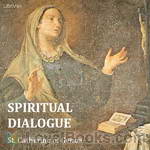 Spiritual Dialogue Between the Soul, the Body, Self-Love, the Spirit, Humanity, and the Lord God
Spiritual Dialogue Between the Soul, the Body, Self-Love, the Spirit, Humanity, and the Lord God
Saint Catherine of Genoa (Caterina Fieschi Adorno, born Genoa 1447 – 15 September 1510) is an Italian Roman Catholic saint and mystic, admired for her work among the sick and the poor. She was a member of the noble Fieschi family, and spent most of her life and her means serving the sick, especially during the plague which ravaged Genoa in 1497 and 1501. She died in that city in 1510.In 1551, 41 years after her death, a book about her life and teaching was published, entitled Libro de la vita mirabile et dottrina santa de la Beata Caterinetta de Genoa... | |
By: Saint Clement of Alexandria | |
|---|---|
 Who is the Rich Man That Shall Be Saved?
Who is the Rich Man That Shall Be Saved?
This short treatise by St. Clement's is an exposition on the words of Jesus Christ to the young rich man, recounted in the gospels. In the account, the man asks Jesus what he must do to inherit eternal life. First, Jesus advises the man to obey the commandments, then Jesus adds: "If you want to be perfect, go, sell your possessions and give to the poor, and you will have treasure in heaven. Then come, follow me." However, when he heard this, "he became very sorrowful because he was very wealthy.... | |
By: Saint Cyprian of Carthage | |
|---|---|
 Epistles of Cyprian
Epistles of Cyprian
Little is known of the early history of Thascius Cyprian until the period of his intimacy with the Carthaginian presbyter Cæcilius, which led to his conversion A.D. 246. That he was born of respectable parentage, and highly educated for the profession of a rhetorician, is all that can be said with any degree of certainty. At his baptism he assumed the name of his friend Cæcilius, and devoted him self, with all the energies of an ardent and vigorous mind, to the study and practice of Christianity... | |
By: Saint Francis de Sales (1567-1622) | |
|---|---|
 Of the Love of God
Of the Love of God
Francis de Sales (1567-1622), Bishop of Geneva from 1602, was a renowned spiritual director who produced two classic guidebooks for earthly wayfarers on their spiritual journey to God: Introduction a la vie devote (Introduction to the Devout Life, 1609) and Traite' de l'amour de Dieu (Treatise on the Love of God, or Of the Love of God, 1616). In the Introduction to the Devout Life, Francis shows how anyone, whatever his or her calling or station in life, can strive for and achieve a life a piety and devotion to God... | |
 Introduction to the Devout Life
Introduction to the Devout Life
First published in the early 17th century, it has proven its value as a daily spiritual guide and helpful reference for living an authentic Christian life. Written specifically for laymen, it began as letters from Saint Francis to a married woman who was seeking holiness amidst the distractions of her life of wealth and status. It contains treasures of wisdom for every reader, from eager beginner to lifelong Christian. Summary by Wikipedia and Phil Chenevert. | |
By: Saint Jane Frances de Chantal (1572-1641) | |
|---|---|
 Selected Letters of Saint Jane Frances de Chantal
Selected Letters of Saint Jane Frances de Chantal
Saint Jane Frances de Chantal is a Roman Catholic Saint, who founded The Congregation of the Visitation after the death of her husband. St. Francis de Sales was her Spiritual Director and a close friend. After St. Francis de Sales died, St. Vincent de Paul became her spiritual director. These letters, which date from a range of 1611-1641, were written to her saintly spiritual directors, her children and relatives, other nuns and religious, as well many others. | |
By: Saint Jerome (347-420) | |
|---|---|
 Against Jovinianus
Against Jovinianus
Jovinianus, had published at Rome a treatise containing the following opinions: "That a virgin is no better as such than a wife in the sight of God. Abstinence is no better than a thankful partaking of food. A person baptized with the Spirit as well as with water cannot sin. All sins are equal. There is but one grade of punishment and one of reward in the future state." Also he held the birth of our Lord to have been natural, rather than that Jesus passed through the walls of the womb as His Resurrection body afterwards did out of the tomb... | |
 Perpetual Virginity of Blessed Mary
Perpetual Virginity of Blessed Mary
St. Jerome composed this essay against Helvidius, who stated that because the gospels mentioned Christ as having “sisters” and “brethren” the Virgin Mary must have had more children from Joseph her husband. In response Jerome asserts three propositions against Helvidius: 1) That Joseph was only putatively, not really, the husband of Mary. 2) That the “brethren” of the Lord were his cousins, not his own brethren. 3) That virginity is better than the married state. - Summary from the preface | |
 Letter 22 to Eustochium
Letter 22 to Eustochium
St. Jerome's most famous letter , written to St. Eustochium, the sixteen-year-old daughter of the Roman widow St. Paula. St. Jerome exhorts St. Eustochium to embrace virginity and teaches her the proper conduct of a young woman. It contains his: 1. view that God, though omnipotent, cannot restore a fallen virgin 2. vivid description of fasting and temptation 3. view of abortion, that it is murder 4. term superbiam sanctam, virginity a "holy pride" 5. praise of wedlock, that it gives him virgins 6... | |
By: Saint John of Damascus (c. 676-749) | |
|---|---|
 Orthodox Faith
Orthodox Faith
The Orthodox Faith is the classic epitome of the Early Greek Fathers. Writing just before the last of the truly Ecumenical Councils (787), he remains to this day, the last of the Eastern theologians whole-heartedly received by the West. This work, then, is an ecumenical touchstone that remains authoritative in Eastern Orthodoxy, Roman Catholicism (through Peter Lombard's Sentances) and in all Reformation Churches interested in purging late medieval accretions and returning to the developed orthodoxy of Creedal Christianity. | |
By: Saint John of Kronstadt (1829-1908) | |
|---|---|
 My Life in Christ: Extracts from the Diary of Saint John of Kronstadt
My Life in Christ: Extracts from the Diary of Saint John of Kronstadt
Moments of Spiritual Serenity and Contemplation, of Reverent Feeling, of Earnest Self-Amendment, and of Peace in God. | |
By: Saint John of the Cross (1542-1591) | |
|---|---|
 Ascent of Mount Carmel
Ascent of Mount Carmel
The Ascent of Mount Carmel is one of the timeless classics of Christian contemplation, radical in its time and deeply influential in the world today. St John of the Cross and St Teresa of Avila worked together to reform the Carmelite Order in the Roman Catholic Church, in which he is honored as one of the Doctors of the Church. An active priest and teacher in his lifetime, this work is considered primary source material the training of Spiritual Directors, and an essential set of guidelines for all students of Revelation through Divine Love. | |
 Obscure Night of The Soul
Obscure Night of The Soul
The Obscure Night of the Soul, better know today as The Dark Night of the Soul, is the distilled teaching of St John of the Cross, who reintroduced and revolutionized Christian Contemplation in the 16th Century. The text remains in print until this day, and has been an inspiration to seekers for centuries. St John's method is known as the Via Negativa, defined in Wikipedia as "a type of theological thinking that attempts to describe God, the Divine Good, by negation, to speak only in terms of what may not be said about the perfect goodness that is God... | |
By: Saint Justin Martyr | |
|---|---|
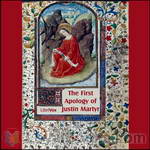 The First Apology of Justin Martyr
The First Apology of Justin Martyr
The purpose of the Apology is to prove to the emperors, renowned as upright and philosophical men, the injustice of the persecution of the Christians, who are the representatives of true philosophy … Christians are the true worshipers of God, the Creator of all things; they offer him the only sacrifices worthy of him, those of prayer and thanksgiving, and are taught by his Son, to whom they assign a place next in honor to him. This teaching leads them to perfect morality, as shown in their teacher’s words and their own lives, and founded on their belief in the resurrection. | |
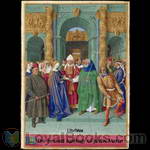 The Second Apology of Justin Martyr
The Second Apology of Justin Martyr
A defense of the Christian faith delivered by St. Justin Martyr to the Roman Senate in the second century AD | |
By: Saint Patrick (d. 461 or 493) | |
|---|---|
 Collected Works of Saint Patrick
Collected Works of Saint Patrick
St. Patrick’s Breastplate – This prayer is attributed to St. Patrick and his diciples. It is written with some celtic pagan elements, but is definitely a Christian prayer asking God for protection through daily life. A Letter to the Soldiers of Coroticus – Patrick writes this letter to excommunicate the soldiers of Coroticus’ army who pillaged villages in Ireland and forced many Christian converts into slavery. Confession – A short autobiography by St. Patrick who tells of being abducted... | |
By: Saint Teresa of Avila (1515-1582) | |
|---|---|
 Relations of Saint Teresa of Avila
Relations of Saint Teresa of Avila
The Relations (in Spanish Relaciones) is an extention of St Teresa's Autobiography. In The Relations she tells of her inner and outer experiences in the form of letters. | |
 Minor Works of St Teresa of Avila
Minor Works of St Teresa of Avila
The prayer and Exclamations, or Meditations, of St Teresa of Avila, recorded in honor of the 500th anniversary of the Saint's birth (March 28, 2015). | |
By: Saint Therese (1873-1897) | |
|---|---|
 The Story of a Soul
The Story of a Soul
Marie Francoise Therese Martin, affectionately known as ‘The Little Flower’, was born on January 2, 1873, in Alencon, France to Louis Martin and Zelie Guerin. She was the youngest and one of five surviving sisters of the nine Martin children. When Therese was 3, her mother died. Louis Martin moved his family to Lisieux to be closer to his late wife’s brother and his family. It was there that Therese’s sister, Pauline, entered the Carmel at Lisieux on October 2, 1882. Therese at that time also heard the Divine Call to religious life... | |
By: Saint Thomas Aquinas (1225-1274) | |
|---|---|
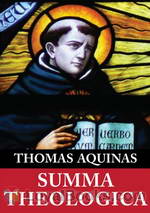 Summa Theologica, Pars Prima
Summa Theologica, Pars Prima
More than nine hundred years after it was first written, this unfinished work of a scholar saint still has the power to move our minds and hearts and set us thinking on the really important questions of life. Summa Theologica or simply the Summa as it is known, was written some time between 1265-74. It is a work that has had a profound and enduring influence on Western thought and literature. Designed to provide answers to Catholic theologians about the teachings of the Church, Thomas Aquinas' book instead goes far beyond its stated purpose... | |
 Summa Theologica - 06 Pars Prima Secundae, On the Last End, On Human Acts
Summa Theologica - 06 Pars Prima Secundae, On the Last End, On Human Acts
The Summa Theologica (or the Summa Theologiae or simply the Summa, written between 1265–1274) is the most famous work of Thomas Aquinas, even though it was never finished. It was intended as a manual for beginners and a compilation of all of the main theological teachings of that time. It summarizes the reasoning for almost all points of Christian theology in the West, which, before the Protestant Reformation, subsisted solely in the Roman Catholic Church. The Summa's topics follow a cycle: the existence of God, God's creation, Man, Man's purpose, Christ, the Sacraments, and back to God... | |
 Summa Theologica - 12 Pars Secunda Secundae, Treatise on Gratuitous Graces and the States of Life
Summa Theologica - 12 Pars Secunda Secundae, Treatise on Gratuitous Graces and the States of Life
The Summa Theologica (or the Summa Theologiae or simply the Summa, written 1265–1274) is the most famous work of Thomas Aquinas (c. 1225–1274) although it was never finished. It was intended as a manual for beginners and a compilation of all of the main theological teachings of that time. It summarizes the reasoning for almost all points of Christian theology in the West, which, before the Protestant Reformation, subsisted solely in the Roman Catholic Church. The Summa's topics follow a cycle: the existence of God, God's creation, Man, Man's purpose, Christ, the Sacraments, and back to God... | |
 Summa Theologica - 04 Pars Prima, On Man
Summa Theologica - 04 Pars Prima, On Man
The Summa Theologica (or the Summa Theologiae or simply the Summa, written 1265–1274) is the most famous work of Thomas Aquinas (c. 1225–1274) although it was never finished. It was intended as a manual for beginners and a compilation of all of the main theological teachings of that time. It summarizes the reasoning for almost all points of Christian theology in the West, which, before the Protestant Reformation, subsisted solely in the Roman Catholic Church. The Summa's topics follow a cycle: the existence of God, God's creation, Man, Man's purpose, Christ, the Sacraments, and back to God. | |
 Catena Aurea, St. Matthew - Vol 1, Part 1
Catena Aurea, St. Matthew - Vol 1, Part 1
The Catena Aurea presents the commentaries of the greatest theologians of the Church as if they were having a discussion on each verse of the Bible. St. Thomas Aquinas put this opus together from sermons and commentaries on the Gospels composed by over eighty early Church Fathers, providing their insights into each passage. The work shows his intimate acquaintance with the Early Fathers. The work was commissioned by Pope Urban IV, so that everyone could hold to the fundamental rule of the Church, that no one is to interpret Sacred Scripture contrary to the unanimous consent of the Fathers . This first volume covers Matthew 1 - 10. | |
 Catena Aurea, St. Matthew - Vol 1, Part 2
Catena Aurea, St. Matthew - Vol 1, Part 2
A catena is a form of biblical commentary, verse by verse, made up entirely of excerpts from earlier Biblical commentators, each introduced with the name of the author, and with such minor adjustments of words to allow the whole to form a continuous commentary. The texts are mainly compiled from mainstream authors, but they often contain fragments of certain patristic writings now otherwise lost. It has been asserted by Faulhaber that half of all the commentaries on scripture composed by the Church Fathers are now extant only in this form. - Summary by Wikipedia | |
 Catena Aurea, St. Matthew - Vol 1, Part 3
Catena Aurea, St. Matthew - Vol 1, Part 3
The Catena Aurea presents the commentaries of the greatest theologians of the Church as if they were having a discussion on each verse of the Bible. St. Thomas Aquinas put this opus together from sermons and commentaries on the Gospels composed by over eighty early Church Fathers, providing their insights into each passage. The work shows his intimate acquaintance with the Early Fathers. The work was commissioned by Pope Urban IV, so that everyone could hold to the fundamental rule of the Church, that no one is to interpret Sacred Scripture contrary to the unanimous consent of the Fathers . | |
 Catena Aurea, St. John - Vol 4, Part 1
Catena Aurea, St. John - Vol 4, Part 1
The Catena Aurea presents the commentaries of the greatest theologians of the Church as if they were having a discussion on each verse of the Bible. St. Thomas Aquinas put this opus together from sermons and commentaries on the Gospels composed by over eighty early Church Fathers, providing their insights into each passage. The work shows his intimate acquaintance with the Early Fathers. The work was commissioned by Pope Urban IV, so that everyone could understand the established meaning of the Gospels from the teaching of the early Fathers. | |
 Catena Aurea, St. John, - Vol 4 part 2
Catena Aurea, St. John, - Vol 4 part 2
The Catena Aurea presents the commentaries of the greatest theologians of the Church as if they were having a discussion on each verse of the Bible. St. Thomas Aquinas put this opus together from sermons and commentaries on the Gospels composed by over eighty early Church Fathers, providing their insights into each passage. The work shows his intimate acquaintance with the Early Fathers. The work was commissioned by Pope Urban IV, so that everyone could understand the established meaning of the Gospels from the teaching of the early Fathers. - Summary by ancientchristian | |
 Catena Aurea (Gospel of St. Luke - Part 1)
Catena Aurea (Gospel of St. Luke - Part 1)
The Catena Aurea presents the commentaries of the greatest theologians of the Church as if they were having a discussion on each verse of the Bible. St. Thomas Aquinas put this work together from sermons and commentaries on the Gospels composed by over eighty early Church Fathers, providing their insights into each passage. The work shows his intimate acquaintance with the Early Fathers. The work was commissioned by Pope Urban IV, so that everyone could understand the established meaning of the Gospels from the teaching of the early Fathers. - Summary by ancientchristian | |
 Catena Aurea (Gospel of St. Luke - Part 2)
Catena Aurea (Gospel of St. Luke - Part 2)
The Catena Aurea presents the commentaries of the greatest theologians of the Church as if they were having a discussion on each verse of the Bible. St. Thomas Aquinas put this work together from sermons and commentaries on the Gospels composed by over eighty early Church Fathers, providing their insights into each passage. The work shows his intimate acquaintance with the Early Fathers. The work was commissioned by Pope Urban IV, so that everyone could understand the established meaning of the Gospels from the teaching of the early Fathers. - Summary by ancientchristian | |
 Catena Aurea: Gospel of St. Mark
Catena Aurea: Gospel of St. Mark
The Catena Aurea presents the commentaries of the greatest theologians of the Church as if they were having a discussion on each verse of the Bible. St. Thomas Aquinas put this opus together from sermons and commentaries on the Gospels composed by over eighty early Church Fathers, providing their insights into each passage. The work shows his intimate acquaintance with the Early Fathers. The work was commissioned by Pope Urban IV, so that everyone could understand the established meaning of the Gospels from the teaching of the early Fathers. - Summary by ancientchristian | |
 Summa Contra Gentiles, First Book (On God)
Summa Contra Gentiles, First Book (On God)
The Summa Contra Gentiles was composed by Thomas Aquinas between 1259 and 1265, in four books broadly covering teachings on God, on Creation, on Providence, and on tenets specific to Christianity. This Summa is not to be confused with his final Summa, the Summa Theologiae. The latter is specifically "theological" and directed to a Christian audience , whereas the former, as the "Contra Gentiles" indicates, is directed toward "non-Christian" thinkers. Implicitly a defence of the Catholic Christian... | |
By: Samuel Butler (1835-1902) | |
|---|---|
 God the Known and God the Unknown
God the Known and God the Unknown
| |
 The Fair Haven
The Fair Haven
| |
By: Samuel Cheetham | |
|---|---|
 History of the Christian church
History of the Christian church
The intention of this work is to provide a sketch of the History of the Church in the first six centuries of its existence, resting throughout on original authorities, and also giving references to the principal modern works which have dealt specially with its several portions. It is hoped that it may be found to supply a convenient summary for those who can give but little time to the study, and also to serve as a guide for those who desire to make themselves acquainted with the principal documents from which the History is drawn. | |
By: Samuel D. Gordon (1859-1936) | |
|---|---|
 Quiet Talks on Prayer
Quiet Talks on Prayer
An open life, an open hand, open upward, is the pipe line of communication between the heart of God and this poor befooled old world. Our prayer is God’s opportunity to get into the world that would shut Him out. (From the first chapter) | |
 Quiet Talks about Jesus
Quiet Talks about Jesus
So far as I can find out, I have no theory about Jesus to make these talks fit into. I have tried to find out for myself what the old Book of God tells about Him. And here I am trying to tell to others, as simply as I can, what I found. It was by the tedious, twisting path of doubt that I climbed the hill of truth up to some of its summits of certainty. I am free to confess that I am ignorant of the subject treated here save for the statements of that Book, and for the assent within my own spirit to these statements, which has greatly deepened the impression they made, and make... | |
 Quiet Talks on the Crowned Christ of Revelation
Quiet Talks on the Crowned Christ of Revelation
| |
 Quiet Talks on John's Gospel
Quiet Talks on John's Gospel
| |
 Quiet Talks on Service
Quiet Talks on Service
| |
 Quiet Talks on Following the Christ
Quiet Talks on Following the Christ
| |
 Quiet Talks with World Winners
Quiet Talks with World Winners
| |
By: Samuel Davidson (1806-1898) | |
|---|---|
 The Canon of the Bible
The Canon of the Bible
| |
By: Samuel Gordon (1871-1927) | |
|---|---|
 Sons of the Covenant: A Tale of London Jewry
Sons of the Covenant: A Tale of London Jewry
Born in London's poverty-stricken and heavily Jewish East End, the Lipcott boys create their own successes in life and love. The brothers' commitment to improving the lives of working class people leads them to concoct The Scheme to help both the residents of their former neighbourhood and the Jewish people as a whole. The author stresses the responsibility of middle class Jews toward the Jewish poor. Consequently, this 1900 story has its preachy moments as well as some essentialised speculations about Jewish history and character... | |
By: Samuel Graham Wilson (1858-1916) | |
|---|---|
 Bahaism and Its Claims A Study of the Religion Promulgated by Baha Ullah and Abdul Baha
Bahaism and Its Claims A Study of the Religion Promulgated by Baha Ullah and Abdul Baha
| |
By: Samuel H. Goodwin (1862-1951) | |
|---|---|
 Mormonism and Masonry
Mormonism and Masonry
The edition of the book published in 1921 explored extensively the reasons why Mormons were not accepted ("are" at the time of publication) into the Masonic Lodges. | |
By: Samuel Johnson (1709-1784) | |
|---|---|
 Prayers and Meditations
Prayers and Meditations
The prayers and meditations of Samuel Johnson, published posthumously by George Strahan to whom Johnson had entrusted the manuscripts. Johnson had been writing these down for over forty years. They often show him at his most repentant, melancholy and fragile -- and the book was controversial because of it -- but they also show the goodness, sense and strength which has always characterised this great man. - Summary by Steven Watson | |
By: Samuel Logan Brengle (1860-1936) | |
|---|---|
 Heart Talks on Holiness
Heart Talks on Holiness
Samuel Logan Brengle was a commissioner in the Salvation Army. His books are known for the practicality, joyfulness and authenticity. His life was spent working with people on the streets, so his insights into the work of the Holy Spirit are relevant to everyday life. His holiness was that of the street, the kitchen, and everyday life. His stories are of men and women living their daily lives. This is the second book in his "Holiness" series, which focuses on the gifts of the Holy Spirit. In particular, we are encouraged to follow the example of Paul in rejoicing through suffering, and learning to serve God in all circumstances. | |
 Way of Holiness
Way of Holiness
Samuel Logan Brengle was a commissioner in the Salvation Army. His books are known for the practicality, joyfulness and authenticity. His life was spent working with people on the streets, so his insights into the work of the Holy Spirit are relevant to everyday life. His holiness was that of the street, the kitchen, and everyday life. His stories are of men and women living their daily lives. This is the third book in his "Holiness" series, which focuses on becoming like Jesus. - Summary by Beth Thomas | |
 Soul Winner's Secret
Soul Winner's Secret
Samuel Logan Brengle was a commissioner in the Salvation Army. His books are known for the practicality, joyfulness and authenticity. His life was spent working with people on the streets, so his insights into the work of the Holy Spirit are relevant to everyday life. His holiness was that of the street, the kitchen, and everyday life. His stories are of men and women living their daily lives. In this book, Brengle explores how to live the Christian life so that we are full of contagious joy; how... | |
 Helps to Holiness
Helps to Holiness
Samuel Logan Brengle was a commissioner in the Salvation Army. His books are known for the practicality, joyfulness and authenticity. His life was spent working with people on the streets, so his insights into the work of the Holy Spirit are relevant to everyday life. His holiness was that of the street, the kitchen, and everyday life. His stories are of men and women living their daily lives. This book is the first in his "Holiness" trilogy, explaining what Holiness is and how to get it. - Summary by Beth Thomas | |
 Love Slaves
Love Slaves
Samuel Logan Brengle was a commissioner in the Salvation Army. His books are known for the practicality, joyfulness and authenticity. His life was spent working with people on the streets, so his insights into the work of the Holy Spirit are relevant to everyday life. His holiness was that of the street, the kitchen, and everyday life. His stories are of men and women living their daily lives. In this book, Brengle explores how to live the Christian life so that we are walking in the centre of God's Will and daily showing His Love to the world around us. From the Preface by General Bramwell Booth: Here are words to clear the thought, as well as to guide the Will and strengthen the Heart. | |
By: Samuel Smiles (1812-1904) | |
|---|---|
 The Huguenots in France
The Huguenots in France
| |
By: Samuel Taylor Coleridge (1772-1834) | |
|---|---|
 Confessions of an Inquiring Spirit and Some Miscellaneous Pieces
Confessions of an Inquiring Spirit and Some Miscellaneous Pieces
| |
By: Samuel Ward (1577-1640) | |
|---|---|
 A Coal From The Altar, To Kindle The Holy Fire of Zeale In a Sermon Preached at a Generall Visitation at Ipswich
A Coal From The Altar, To Kindle The Holy Fire of Zeale In a Sermon Preached at a Generall Visitation at Ipswich
| |
By: Samuel Wilberforce (1805-1873) | |
|---|---|
 The Rocky Island and Other Similitudes
The Rocky Island and Other Similitudes
| |
By: Sanger Brown (1884-1968) | |
|---|---|
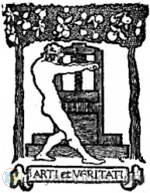 The Sex Worship and Symbolism of Primitive Races An Interpretation
The Sex Worship and Symbolism of Primitive Races An Interpretation
| |
By: Santa Teresa de Jesus (1515-1582) | |
|---|---|
 The Life of St. Teresa
The Life of St. Teresa
Saint Teresa of Ávila, also called Saint Teresa of Jesus, baptized as Teresa Sánchez de Cepeda y Ahumada, (March 28, 1515, at Gotarrendura (Ávila), Old Castile, Spain – October 4, 1582, at Alba de Tormes, Salamanca, Spain) was a prominent Spanish mystic, Carmelite nun, and writer of the Counter Reformation. She was a reformer of the Carmelite Order and is considered to be, along with John of the Cross, a founder of the Discalced Carmelites. In 1970 she was named a Doctor of the Church by Pope Paul VI. | |
 Conceptions of Divine Love
Conceptions of Divine Love
Conceptions of Divine Love was written in 1577. St. Teresa wrote this with the idea of explaining certain words found in the Book of Canticles. When her confessor read the title of her work, he ordered her to immediately burn it, which, of course, she did. But one of her nuns had copied the first seven chapters, which was then published in 1612. Here, Father John Dalton has translated only four of those chapters in 1852. | |
By: Santa Teresa de Jesus (Avila) (1515-1582) | |
|---|---|
 The Way of Perfection
The Way of Perfection
El Camino de Perfección (trans.: The Way of Perfection) is a method for making progress in the contemplative life written by St. Teresa of Ávila for the sisters of her reformed convent of the Carmelite Order (Discalced). St. Teresa was a major figure of the Catholic Reformation in 16th Century Spain. | |
By: Sarah Doudney (1841-1926) | |
|---|---|
 Nelly Channell
Nelly Channell
Another fascinating book by the author of A Vanished Hand. Rhoda returns home after the death of her employer to find out that her cousin Helen, with whom she was raised, also returned home. Her husband stole 300 pounds and had to run away to Australia and leave her pregnant. Rhoda has to reconcile her shame and learn to cope with the new situation. But nothing is as it seems. More than anything, this book is about breaking stigmas and opening up your mind to understand and love people, despite their faults, usually with the help of God. Perfect for fans of good novels about crimes, stories about childhood, along with lovers of religious fiction. - Summary by Stav Nisser. | |
By: Sarah A. (Sarah Ann) Myers (1800-1876) | |
|---|---|
 Watch—Work—Wait Or, The Orphan's Victory
Watch—Work—Wait Or, The Orphan's Victory
| |
By: Sarah J. Rhea | |
|---|---|
 Life of Henry Martyn, Missionary to India and Persia, 1781 to 1812
Life of Henry Martyn, Missionary to India and Persia, 1781 to 1812
| |
By: Sarojini Naidu (1879-1949) | |
|---|---|
 Golden Threshold
Golden Threshold
Sarojini Naidu was a remarkable woman. Known as the Nightingale of India, she started writing at the age of thirteen and throughout her life composed several volumes of poetry, writing many poems which are still famous to this day. As well as being a poet, Naidu was an activist and politician, campaigning for Indian independence and became the first Indian woman to attain the post of President of the Indian National Congress. This volume contains the beautiful 'Indian Love-Song', as well as many other moving verses... | |
By: Selina Bunbury | |
|---|---|
 Fanny, the Flower-Girl, or, Honesty Rewarded
Fanny, the Flower-Girl, or, Honesty Rewarded
| |
By: Selma Lagerlöf (1858-1940) | |
|---|---|
 Christ Legends
Christ Legends
These are beautiful little stories about Christmas from the Swedish storyteller Selma Lagerlöf. As she explains in the first story, they were told her by her grandmother "I remember that grandmother told story after story from morning till night, and that we children sat beside her, quite still, and listened. It was a glorious life! No other children had such happy times as we did. It isn’t much that I recollect about my grandmother. I remember that she had very beautiful snow-white hair, and stooped when she walked, and that she always sat and knitted a stocking... | |
By: Sheldon Dibble (1809-1845) | |
|---|---|
 Thoughts on Missions
Thoughts on Missions
| |
By: Sherwood Eddy (1871-1963) | |
|---|---|
 With Our Soldiers in France
With Our Soldiers in France
| |
By: Sholem Aleichem (1859-1916) | |
|---|---|
 Jewish Children (Yudishe Kinder)
Jewish Children (Yudishe Kinder)
Although written from a child’s perspective, this is not a kids book but a series of funny, poignant, and sometimes disturbing stories about life in a late 19th-century Russian-Jewish village — the world of my grandparents. Sholem Rabinovich (1859-1916) was born in Pereiaslav, Ukraine and later immigrated to New York. His short stories about Tevye and his daughters were freely adapted into the musical FIDDLER ON THE ROOF. Rabinovich’s will contained the following injunction: “Let my name be recalled with laughter or not at all.” His translator, Hannah Berman, was Irish of Lithuanian descent.Some of these stories may be too intense for younger children. | |
By: Sidney Watson | |
|---|---|
 The Mark of the Beast
The Mark of the Beast
| |
By: Silas Hocking (1850-1935) | |
|---|---|
 Her Benny
Her Benny
A very heart touching story about two homeless children, a brother and sister, living on the streets of Liverpool, England during Victorian times. | |
By: Sir Edwin Arnold (Translator) (1832-1904) | |
|---|---|
 Bhagavad Gita
Bhagavad Gita
One of the world’s most valued scriptures, the Bhagavad Gita is a Hindu scripture which is a part of the Indian epic Mahabharata. Undeniably, it is also one of the most important texts in the history of literature and philosophy. The scripture offers a guide on how to achieve a self-sufficient life and clarification of Indian theology. Written in the form of a poetic dialogue between Krishna and Arjuna, the piece is comprised of 700 verses. It depicts the relationship between man and God, a divine purpose, and the omnipresence of God that serves to reward good... | |
By: Sir John Barrow (1764-1848) | |
|---|---|
 Eventful History of the Mutiny and Piratical Seizure of H.M.S. Bounty
Eventful History of the Mutiny and Piratical Seizure of H.M.S. Bounty
On December 31 1787, the HMS Bounty, a small sailing vessel embarked from Spithead Harbor, England bound for Tahiti. Her mission was sponsored by the Royal Society in London and aimed at picking up breadfruit plants and fruit from Tahiti and conveying them to the West Indies, where it was hoped they would take root and become a commercial crop. The Bounty was an old ship with a young captain and 46 young officers. The captain's cabin was converted into a potting shed for the expected breadfruit cargo... | |
By: Sir Robert Anderson (1841-1918) | |
|---|---|
 Doubter's Doubts About Science and Religion
Doubter's Doubts About Science and Religion
A DOUBTER'S Doubts about Science and Religion was first published anonymously, at a time when the author was Assistant Commissioner of Police and Head of the Criminal Investigation Department, at Scotland Yard . As the book is addressed to men of the world, it speaks from the standpoint of scepticism — the true scepticism which tests everything, not the sham sort which credulously accepts anything that seems to discredit the Bible. If, for example, the Bible taught evolution, it may be averred that evolution would be scoffed by many who now cling to it with a childlike faith worthy of the infant class in the Sunday School... | |
 Fundamentals Volume 2
Fundamentals Volume 2
The Fundamentals: A Testimony To The Truth is a set of ninety essays published between 1910 and 1915 by the Testimony Publishing Company of Chicago. According to its foreword, the publication was designed to be "a new statement of the fundamentals of Christianity." However, its contents reflect a concern with certain theological innovations related to liberal Christianity, especially biblical higher criticism. It is widely considered to be the foundation of modern Christian fundamentalism. The essays were written by sixty-four different authors, representing most of the major Protestant Christian denominations... | |
By: Sister M. Josephine | |
|---|---|
 Ways of St. Anthony
Ways of St. Anthony
Saint Anthony of Padua is especially invoked and venerated all over the world as the patron saint for the recovery of lost items and is credited with many miracles involving lost people, lost things and even lost spiritual goods. The names and places in these stories are fiction; the incidents, however, are real. They were sent to the Editor by clients of the Saint in their accounts of thanksgivings for favors received through St. Anthony's intercession and for which most of them had promised publication. The writer has simply woven these accounts into readable stories. | |
By: Sister Mary Jean Dorcy (1914-1988) | |
|---|---|
 A Crown for Joanna
A Crown for Joanna
She was born a princess, heir to her father’s kingdom of Portugal, and she might at will have reigned from almost any throne in Europe. But instead of this, she made what to her world seemed a thoroughly mad choice – for she chose to have a throne in heaven. Today those scepters are dust which she would not accept, and as Blessed Joanna of Portugal she possesses a throne imperishable… This children’s biography of Blessed Joanna of Portugal was written by Sister Mary Jean Dorcy, a Catholic Dominican Nun... | |
By: Snorri Sturleson (1178-1241) | |
|---|---|
 Prose Edda (Brodeur Translation)
Prose Edda (Brodeur Translation)
Also known as the Younger Edda or Snorri's Edda, the Prose Edda is a three-part work composed or at least compiled by thirteenth-century Icelandic scholar Snorri Sturluson. Along with the Elder or Poetic Edda written by an unknown poet a half-century earlier, the Prose Edda is a major source of much older Norse mythology as it had evolved through the generations. The two Eddas have had a profound effect on European literature in both style and content, not least on J.R.R. Tolkien's Middle-Earth fantasies... | |
By: Society of Friends | |
|---|---|
 On Singing and Music
On Singing and Music
| |
By: Solomon Benjamin Shaw (1854-?) | |
|---|---|
 Children's Edition of Touching Incidents and Remarkable Answers to Prayer
Children's Edition of Touching Incidents and Remarkable Answers to Prayer
Solomon Benjamin Shaw was a Methodist Episcopal minister, historian, essayist and editor. Solomon and Etta Ellen were married in McBride, Montcalm County, Michigan. Solomon resided in Chicago, Illinois for a time before taking up his principal residence in Grand Rapids, Michigan. Rev. Shaw labored on what he referred to as the "undenominational line". This stand constituted a middle ground between the association plan favored by the denomination-oriented members of the National and the independent congregationalists of the movement... | |
By: Sophie May (1833-1906) | |
|---|---|
 Prudy Keeping House
Prudy Keeping House
| |